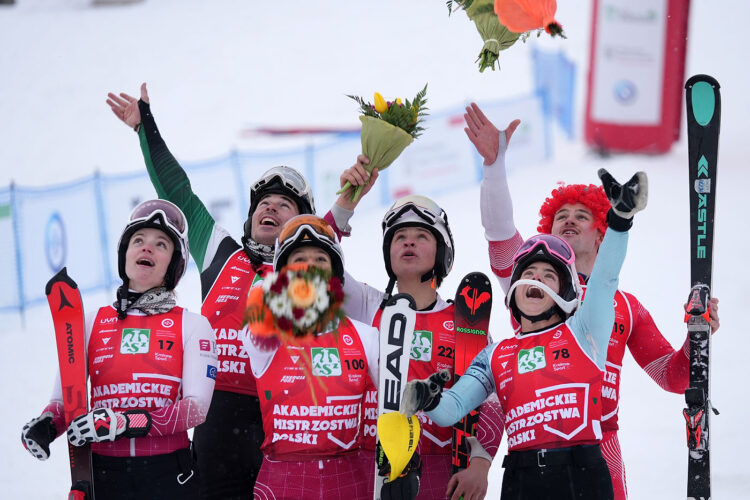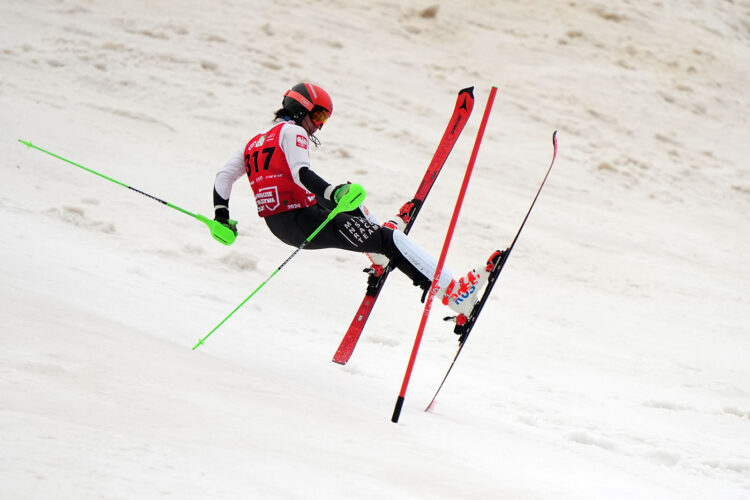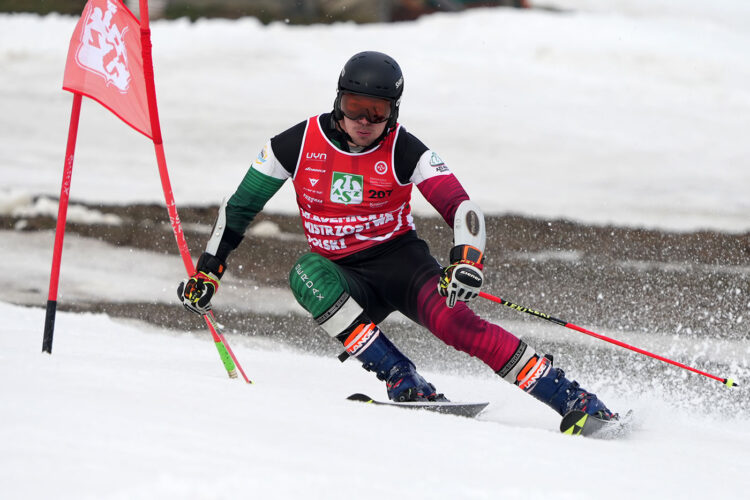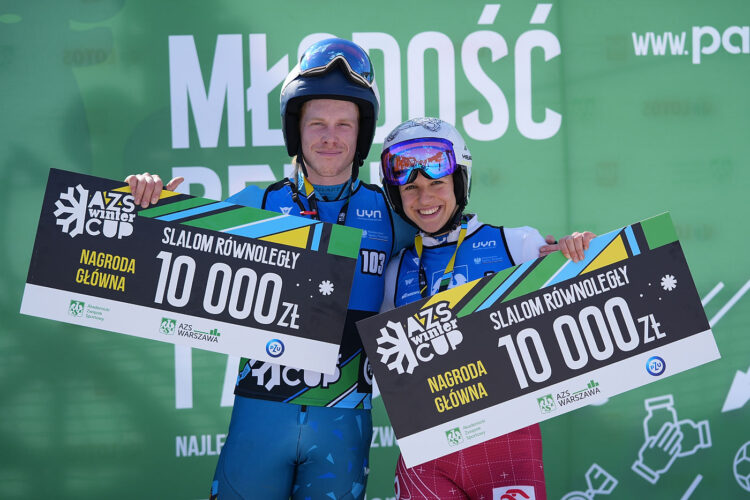Przytaczamy in extenso wypowiedź jednego z najlepszych gigancistów Teda Ligety’ego na temat najnowszego sprzętu, który ma zostać obligatoryjnie wprowadzony w niedalekiej przyszłości (od przyszłego sezonu, tj. 2012) na trasy Pucharu Świata. Najbardziej radykalne zmiany mają dotyczyć sprzętu gigantowego. Dlatego Ted z taką powagą zajął się tym tematem. Naprawdę warto to przeczytać…
My thoughts on FIS’s attempt to ruin GS.
There’s a lot of talk out there right now about the new FIS ski regulations to be implemented in 2012- most specifically the GS radius minimum. I’ve spoken out against the new rules which include a new guideline stating that GS skis cannot be less than 40 meters in radius (whereas the current rule is 27m). I have even joked that Michael Von Gruenigen and Alberto Tomba were going to come out of retirement and use their old skis. Although, there is just one problem with that- their skis from the 90’s wouldn’t be legal.
For the past 17 years, GS ski radius hasn’t changed much. In 1996, World Cup racers were skiing on skis with a similar radius to today- with a 28 m radius. Three years earlier, in 1993, Rainer Salzgeber, the Head Race Manager who raced in the 90’s, said he raced World Cup on skis with 32-meter radius. To give you context of the times, “Schlinder’s List” and “Sleepless in Seattle” were in theaters and the first President Bush was handing over the keys to the White House to the newly-elected Bill Clinton. You would have to go back to the 80’s to find 40 meter radius skis. That’s the radius FIS wants everyone from me to 15-year old boys to be racing GS on. Wave good bye to the sport’s progression of arcing the cleanest possible turns.
I write this article now because today I finally had the chance to try a prototype of the 40m GS skis. And quite frankly, they suck. I felt like Phil Mahre circa ’84. Try as I might, I could not get the skis to come around without a huge slide and step. Warner Nickerson also tried them in the course. As I watched him fight his way down through the course, I could only think about how much the scene reminded me of the silent black and white films from the early days of skiing. At the bottom of the run, Warner said he was worried he was going to straddle every gate because the tips were so long. To have any chance of making the next gate, he had to go recklessly straight and then awkwardly slide. Might I say ‘dangerous’?
There has been a lot of talk that ski racing has gotten too dangerous. Leading that discussion is the sport’s international governing body; yes, of all people, FIS. The truth is, ski racing is a dangerous sport: always has been and always will be. And don’t get me wrong, I’m all for safety and taking the precautionary measures to avoid needless risks. But when I ask myself if GS is “super” dangerous in the relative sense of things, the answer is NO. In the last two years, there has been a grand total of three injuries among the skiers of the GS elite (ranked in the Top 30); and I wouldn’t contribute any of the causes of these injuries to the equipment. For example, Thomas Fanara tore his ACL in Beaver Creek in ’09 because the gate panel hooked/wrapped him in the gate then sent him flying (also note, the snow conditions were that very grippy man-made snow); Marcel Hirscher broke his ankle due mainly to poor hill preparation (he was running #2 and there was a huge unmarked hole in the ice that he stuffed his foot into at full speed); The third injury of the past two years was Benni Raich’s ACL tear that happened racing in a dual in which men and women were running the same course (men and women ski a different line resulting in a sharp grove at the bottom of the turn which caught Benni’s ski twisting him up and not letting him release the energy out of the turn). If you ask me, three injuries in 2 years is an acceptable level of danger- especially considering equipment was not at fault.
Unfortunately, I don’t remember the era of 40-meter skis very well so I cannot provide good examples of GS skiers hurting themselves based solely on the radius of the ski. But I do remember greats from the era like Marc Girardelli, among others that had countless numbers of injuries skiing on the straight skis. FIS should be reminded that racers have injured themselves in every era of the sport and chances are, they will continue to do so. When you have a 195cm, rigid lever firmly attached to your foot, there is a good chance of hurting yourself if you fall, no matter the sidecut or radius.
FIS claims that slowing down the racers (via drastic equipment modification) will make the sport safer. But the reduction in speed when using longer radius skis is inconsequential. When you crash, what’s the difference if you are going 90kph or 80kph or in downhill, 140kph to 120kph? Plus coaches are now going to set straighter because of the new rule changes so speed/danger really won’t decrease anyways.
It should be noted that FIS doesn’t exactly have the best track record in making smart, safer equipment rules. For example, just a few years ago FIS lowered stand- height and widened the skis- putting more force on the knee and body which resulted in more injuries. Narrower skis would have been the right move in that instance and is the only part of this new round of rules they got right.
If you want to slow down the sport then don’t allow tight suits and make us wear normal ski clothes like skier-cross- I don’t like wearing my race suit anyways. Another idea is to make an off set rule for GS so that courses are set with rounder turns.
I obviously must seem very biased when it comes to GS rules since things have gone very well for me in recent years. And to be honest, if the rule changes truly were safer and wouldn’t ruin the sport, I’d be all for them even if it were to my disadvantage. But from where the new rules stand now, I don’t see any added benefit to the interests of skier safety. If anything, I fear these new rules will drain all the fun out of the sport and will deter future generations from picking up a pair of race skis when they head out to slopes. Ski racing is a unique sport in the way it balances of finesse and well-rounded athletics. From my and Warner’s experiences skiing on these new skis, the new rules will favor brute strength and size, think Aksel and harm smaller athletic skiers like Fanara and Hirscher. I hope these proposed rule changes are just a ploy by FIS so they can say they made an ‘attempt’ to make the sport safer. Otherwise, I better dust off those Sarajevo Olympics VHS tapes and start studying that legendary Phil Mahre and Ingemar Stenmark step.
Ted Ligety
Źródło: tedligety.com







1 komentarz do “Ted Ligety o zmianach w sprzęcie GS”
Don’t you just hate not knowing if a website is offline or if its just you? Well now its easy to check if its the website or your ability to access the website by doing a simple search on the site at http://www.downforeverybody.com